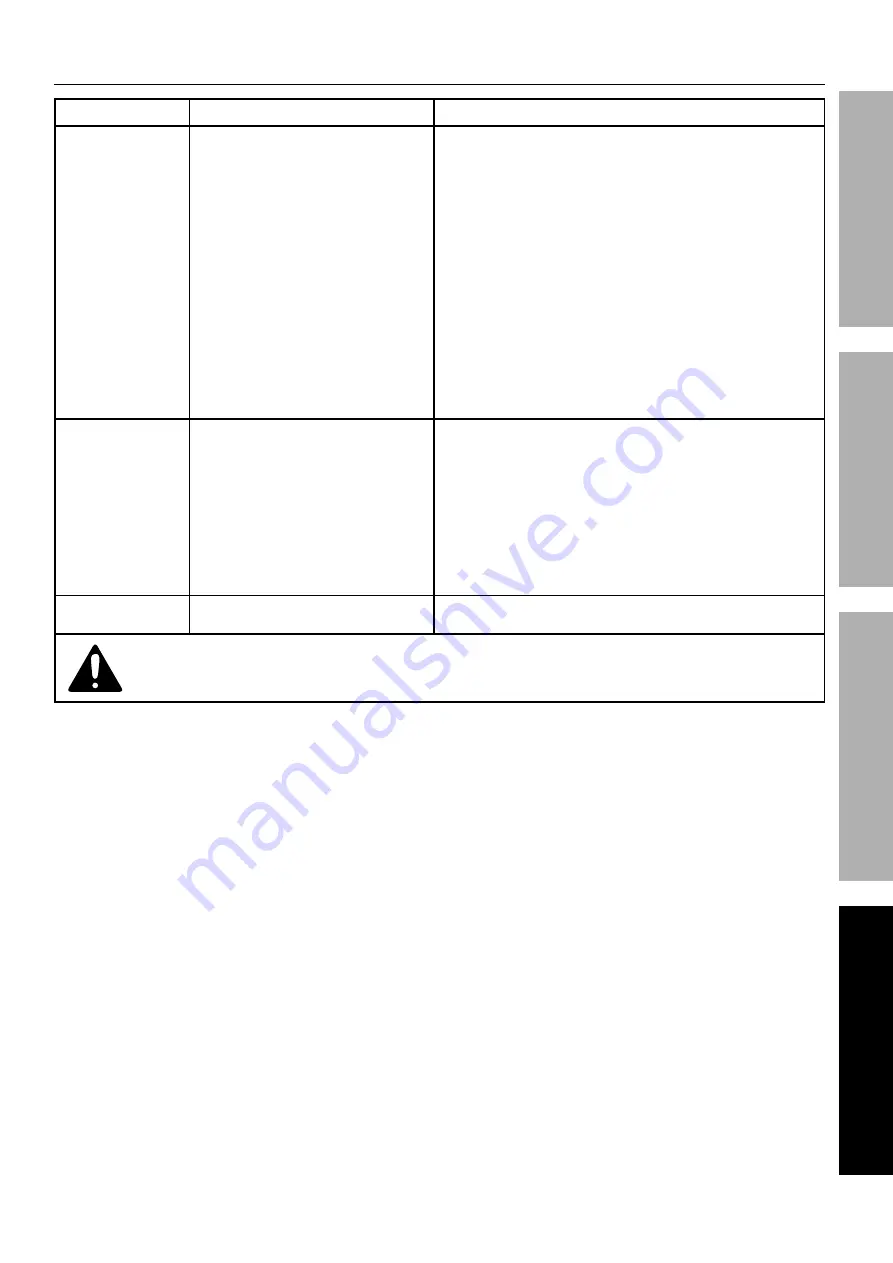
Page 13
For technical questions, please call 1-888-866-5797.
Item 93755
SA
FE
TY
OP
ERA
TI
O
N
MAINT
ENANC
E
SE
TUP
Troubleshooting
Problem
Possible Causes
Likely Solutions
Decreased output. 1. Not enough air pressure and/or
air flow.
2. Obstructed valve.
3. Air leaking from loose housing.
4. Mechanism contaminated.
5. Liquid is too viscous.
6. Blockage in barrel or Extractor.
1. Check for loose connections and make sure that
air supply is providing enough air flow (CFM)
at required pressure (PSI) to the tool's air inlet.
Do not exceed maximum air pressure.
2. Clean around valve to ensure free movement.
3. Make sure housing is properly assembled and tight.
4. Have qualified technician clean and
lubricate mechanism. Install in-line filter in
air supply as stated in Setup: Air Supply.
5. Make sure the Air Regulator of the Drum
Extractor is adjusted to compensate for
the viscosity of the liquid being extracted.
Do not exceed maximum air pressure.
6. Remove Drum Extractor from the barrel and check for
blockages in the system and remove any obstructions.
Severe air leakage.
(Slight air leakage
is normal,
especially on
older tools.)
1. Cross-threaded housing
components.
2. Loose housing.
3. Damaged valve or housing.
4. Dirty, worn or damaged valve.
1. Check for incorrect alignment and uneven gaps.
If cross-threaded, disassemble and
replace damaged parts before use.
2. Tighten housing assembly.
If housing cannot tighten properly,
internal parts may be misaligned. Technician needs
to disassemble tool, align parts and reassemble.
3. Replace damaged components.
4. Clean or replace valve assembly.
Housing heats
during use.
Worn parts.
Have qualified technician inspect internal
mechanism and replace parts as needed.
Follow all safety precautions whenever diagnosing or servicing the tool.
Disconnect air supply before service.
































